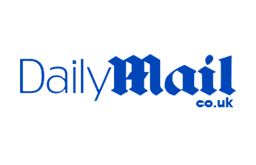A bite problem is often the cause of headaches that don’t go away. Some people call this “TMJ,” which is not the right name. The temporomandibular joint is what TMJ stands for, and most headaches are not caused by the joint itself. It has more to do with how you move your face.
How are Headaches Related to the Teeth and Jaws?
Teeth and jaws are part of a complicated system that includes the TMJ, the muscles that open and close the mouth, and the way the upper and lower teeth fit together like puzzle pieces. All of them go together. When a problem happens with one part of a system, it usually affects all the other parts in some way.
Most of the time, the upper and lower teeth are pushed together because the facial muscles are too active. This is called “bruxism” in medical terms, and it includes both clenching and grinding the teeth. Just like your biceps get sore when you do too many curls, your facial muscles get sore when you clench your teeth.
The temporalis muscle is a very important muscle that helps close the upper and lower jaws. This big muscle, which looks like a fan, covers both temples and goes all the way up to the forehead. When you grind your teeth too hard, you use this muscle too much, which hurts and can give you a headache. You can also feel pain in the masseter and pterygoid muscles, which are also big and are used when you clench your teeth. When these muscles are overworked, it hurts in the cheeks, and it hurts even more when you clench your teeth.
How do Bite Problems Cause Headaches?
First, we’ll talk about what an ideal jaw system looks like. For a “perfect bite,” all three parts of the system must work well together. This means that the “ball” of the lower jaw is resting in the “socket” of the skull, while the upper and lower teeth fit together well and the facial muscles are only partially flexed. It’s pretty rare to find a bite like this.
Most of the time, the teeth win and force the joint and/or muscles into positions that are not as good as they could be. Think about it: you can only put your upper and lower teeth together in one way. Your instinct is to make the teeth fit, regardless of your TMJ or muscles. So, this puts stress on the joints and muscles of many people because they are no longer in the best place for them to work well.
When you squeeze your teeth together, you may pull the “ball” slightly out of the socket or make the muscles in your face tighten too much. When teeth touch each other in a way that keeps them from coming together naturally and evenly, this is called interference. When this happens, the muscles tend to go into overdrive to try to get a good bite, but fail.
When a joint is always just a little bit out of place, it can cause arthritis, nerve pain, and headaches.
How Can the Dentist Help Fight these Headaches?
Some people experience this muscle strain during the day as they clench their teeth during a long commute, a stressful day at work, or a hard workout at the gym. Because of bruxism, the muscles of other people will move more at night. Pain can be caused by joint strain at any time of day or night. The goal of any bite treatment is to help you get your teeth, TMJs, and muscles to work together in a way that feels good.
Protective Appliances (Splints)
One way to ease the pain of a bad bite is to wear a splint, which is a protective device worn over the teeth. By covering the teeth, it changes how the upper and lower teeth fit together and points them in the right direction. It lets the joints and muscles find their most natural and comfortable position by getting rid of the puzzle-piece fit of the teeth.
This is only a short-term fix, because when the splint is not on the teeth, the teeth will again put pressure on the joints and muscles. Nightguards can help a lot of people with headaches if they wear them every night. People who have daytime pain that doesn’t go away need a more permanent fix.
Bite Analysis and Equilibration
It may be necessary to change how the upper and lower teeth come together to get the bite back in sync with the joints and muscles. This can be done by moving the teeth with braces, changing the shape of the teeth, or a combination of both. The goal is to change the way the upper and lower teeth fit together so that the TMJs are in the right place and the facial muscles have the right amount of tension when the upper and lower teeth fit together.
This is not something that can be done quickly or at random. Dentists spend a lot of time learning about bite problems and how to correctly diagnose and treat them. After the right diagnosis, the treatment could be as easy as adjusting a few small parts of the bite that are causing problems. It could also be as hard as rebuilding the bite from scratch by putting crowns on all of the teeth.
Most people will need to wear an appliance at night to keep their teeth in their new position and protect their joints and muscles in the long run.
Dr. Motiwala in International Press
Dr. Motiwala is a world-renowned dentist who has cared for thousands of patients from every corner of the globe. He has been featured on several news outlets; to read about it, select the network’s logo below.
 |
 |
 |
Time to Get in Touch With Us!!
For more information about the Smile Makeover in India, get in touch with Dr. Motiwala’s Dental Clinic & Implant Center at +91 99596 14584. Simply fill out the form on our CONTACT US page.


Leave a Reply